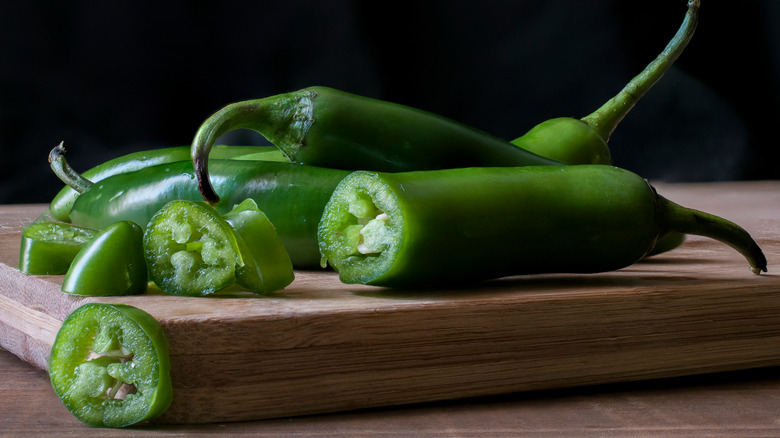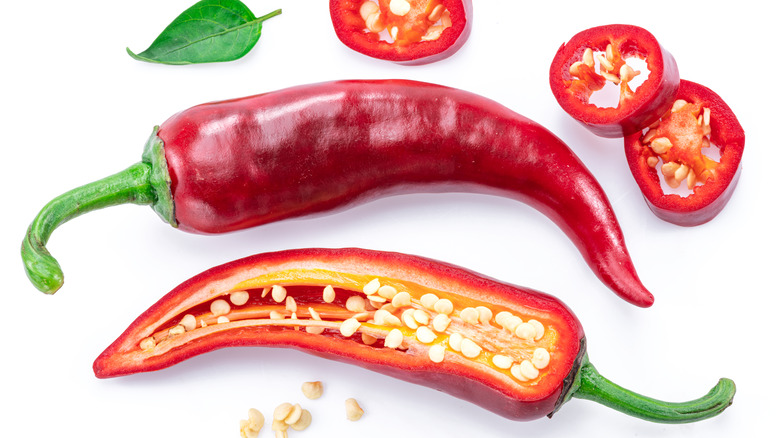The Method That Makes Seeding Chile Peppers Much Easier
Chile peppers bring the heat. If you are a fan of all things spicy and sweat-inducing, these fiery peppers can really pack a punch. According to Food 52, chile peppers contain capsaicin — a magically hot ingredient that has many individuals reaching for a glass of milk. After all, milk is the best salve to soothe foods that make our mouths feel that burning sensation that you either love or avoid. As the food site notes, the more capsaicin a pepper contains, the higher the impact of heat your tongue and taste buds are going to feel. So, where do you find the capsaicin in a chile pepper?
The American Chemical Society explains that capsaicin is contained in the membrane and seeds of the chile pepper and is actually an oil that has no smell or color. Get it on your fingers or any other body part, and you will experience the same burning sensation you experience when you eat the hot peppers. One of the methods we use to control the heat level of our favorite chile pepper — be it a jalapeno, poblano, gulp, ghost pepper — is removing those parts of the pepper that provide our mouths with such angst. Deseeding a chile pepper can be tricky because you want to avoid touching any parts of the chile containing capsaicin. But don't worry. This method makes removing the seeds super easy.
It will keep your chile pepper whole
Per Food 52, the easiest method to deseed your chili pepper involves leaving your pepper whole. One of the many pros of using this method means you can easily use these chili peppers to make poppers. How does it work? The food site explains that to remove the seeds and membrane from your chile pepper, you'll need to slice off its top hat — the part with the green stem. From there, you will need a small spoon which you will use to scoop out and scratch away all of the inners of the pepper. And that's it. Once you're finished removing the seeds and the membrane, you are in business to start cooking.
While Food 52 does not directly recommend using gloves, we strongly suggest you do. Per the Washington Post, in order to mitigate the possibility of your poor, unassuming hands experiencing that burning sensation, wear gloves. This will help protect them from capsaicin. However, they also note that the type of gloves may impact whether or not the oil can penetrate your skin. Latex gloves may not be enough depending on the chile pepper, and you may be better off using nitrile gloves that are "resistant" to chemicals (via Gloves.com).

